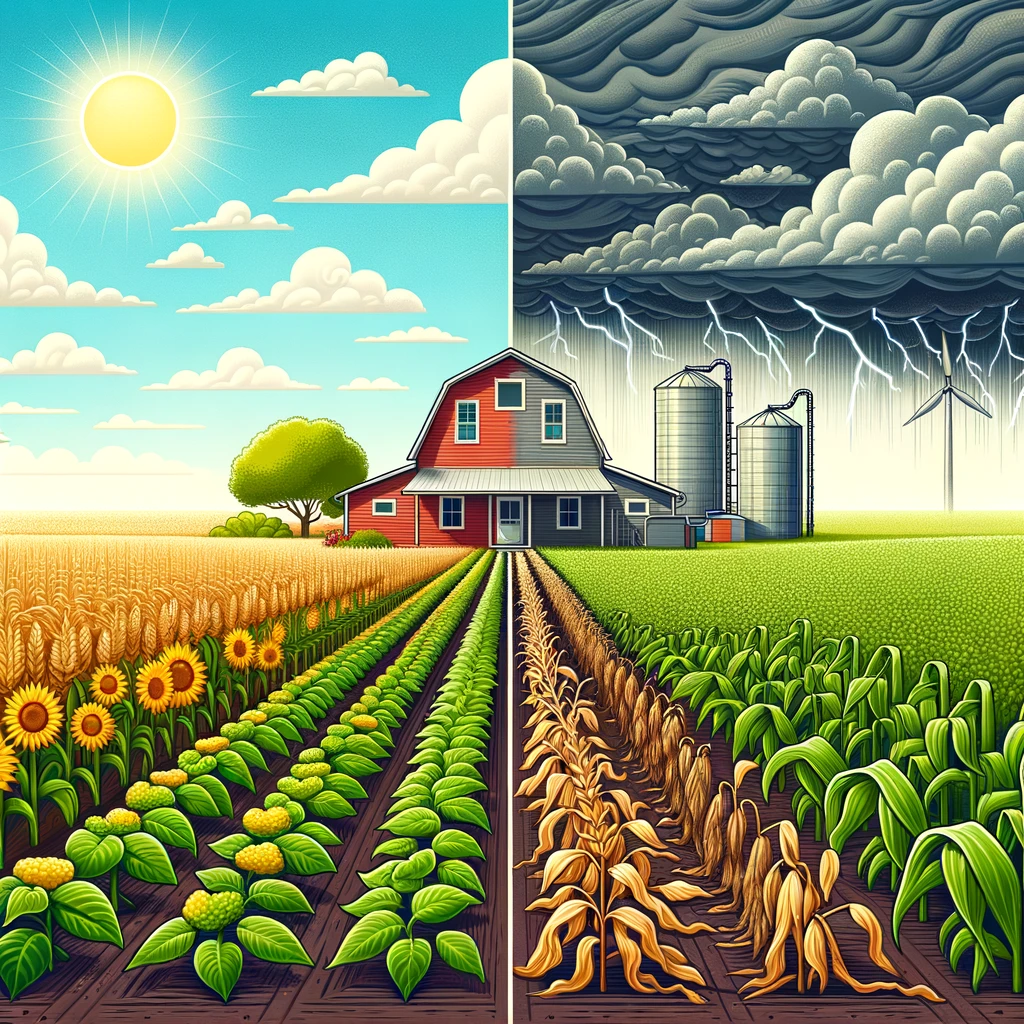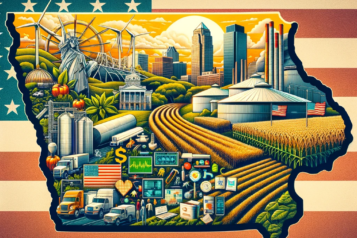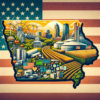Des Moines, IA — In the rolling fields of Iowa, where corn and soybeans reign supreme, a quiet struggle is underway. It’s a battle against an invisible foe that doesn’t strike with force but with the fickleness of the market and the climate: agricultural dependence and volatility.
As one of the nation’s top agricultural states, Iowa’s economy is deeply rooted in the soil of its vast farms. However, this dependence on agriculture makes the state particularly vulnerable to market swings and environmental changes, posing significant risks to its economic stability and the livelihoods of its farmers.
The Double-Edged Sword of Monoculture
Iowa’s fields are a testament to efficiency and productivity, largely due to the widespread practice of monoculture—focusing on a single crop like corn or soy. While this has benefits in terms of economies of scale and specialized farming techniques, it also means that Iowa’s agricultural economy is at the mercy of the prices and demand for just a few commodities.
Trade Wars and Tariffs: A Catalyst for Crisis
Recent trade disputes have shown just how sensitive Iowa’s economy can be to geopolitical shifts. Tariffs imposed on China, one of the largest importers of American soybeans, led to a dramatic drop in demand, leaving farmers with surpluses that drove prices down and cut into their already thin profit margins.
Climate Change: An Unpredictable Player
The specter of climate change looms large over Iowa’s farms. Unseasonable weather patterns, including droughts and floods, have become more common, disrupting planting and harvest cycles. This unpredictability makes it challenging to maintain the consistent yields needed to stay financially solvent.
Biofuels: Boon or Bubble?
Iowa has embraced biofuels like ethanol as a way to add value to its corn production. However, the biofuel industry is heavily dependent on government subsidies and mandates, which are subject to political whims. Should these policies change, the fallout for Iowa could be significant.
The Push for Diversification
Acknowledging the risks, there’s a growing movement in Iowa towards diversifying agriculture. This includes exploring alternative crops, investing in renewable energy, and encouraging organic and local farming practices. However, diversification is a slow process, and many farmers are hesitant to change the methods that have worked for generations.
Technology and Innovation: The Silver Lining
Technological advancements in agriculture, from drones to data analytics, offer a glimmer of hope. These tools can help farmers make more informed decisions, reduce waste, and improve crop yields. However, access to technology is not evenly distributed, often favoring larger operations over small family farms.
Conclusion: Weathering the Storm
As Iowa grapples with the volatility inherent in its agricultural dependency, the resilience of its farmers is put to the test. Solutions lie not in abandoning agriculture but in strategic adaptation. The state’s economic health will depend on its ability to navigate the uncertain waters of global markets and a changing climate, all while ensuring that the next generation of farmers is prepared for the challenges ahead.
In the heartland of America, the fields may look the same, but the farmers watching over them know that change is in the wind. The question remains: will Iowa dance nimbly with the volatility, or will it be caught off guard by the next storm on the horizon?
















